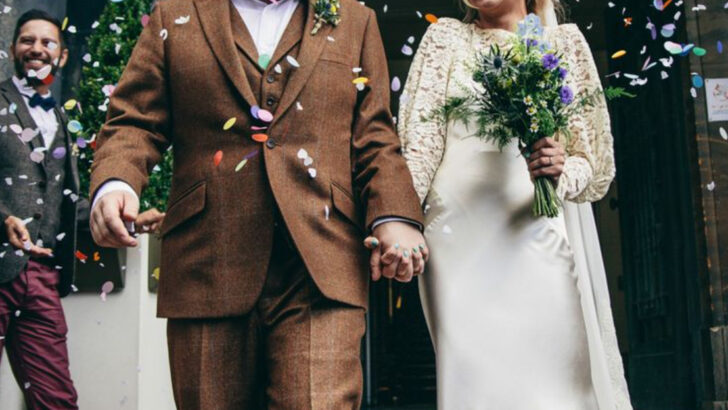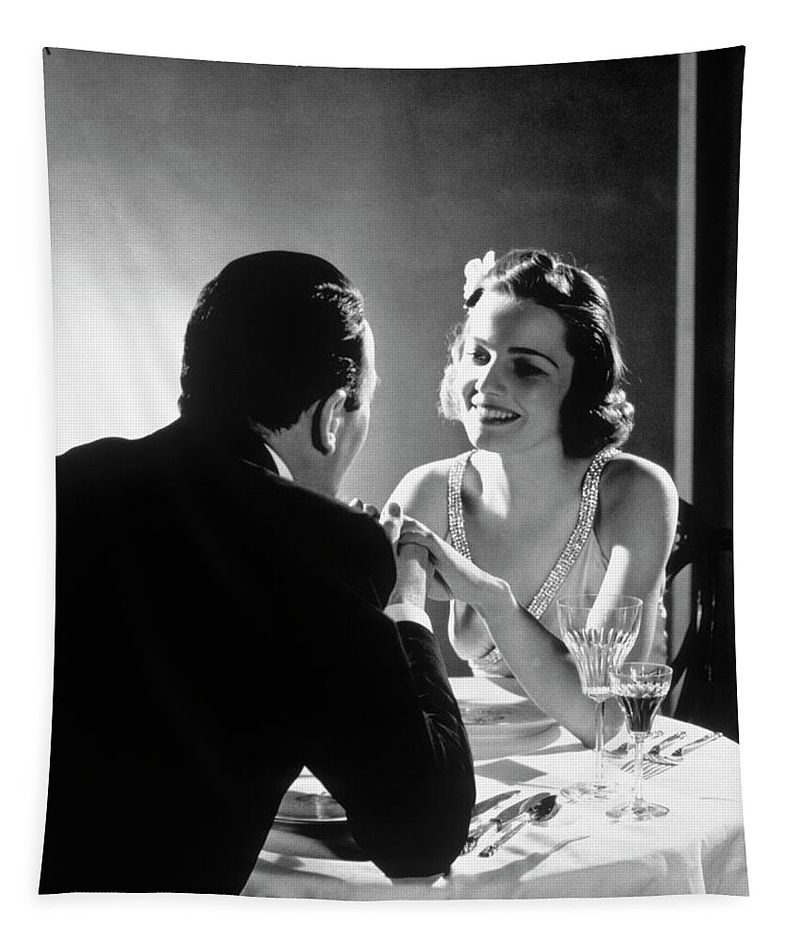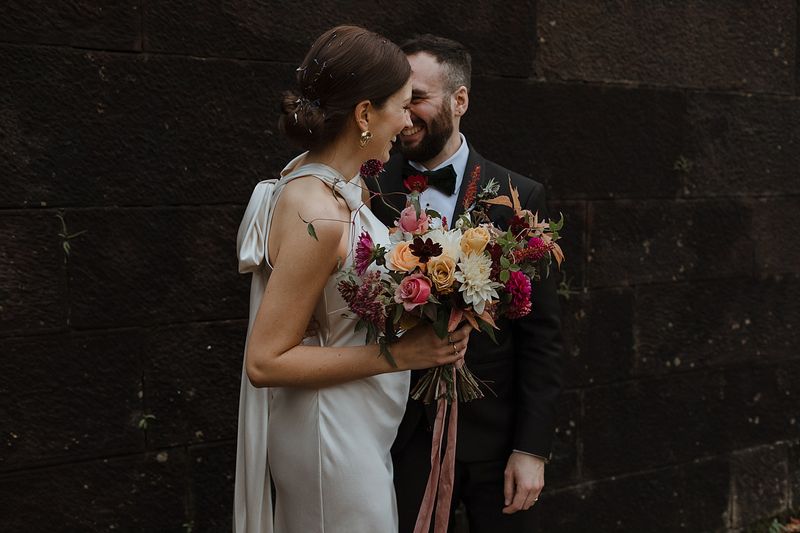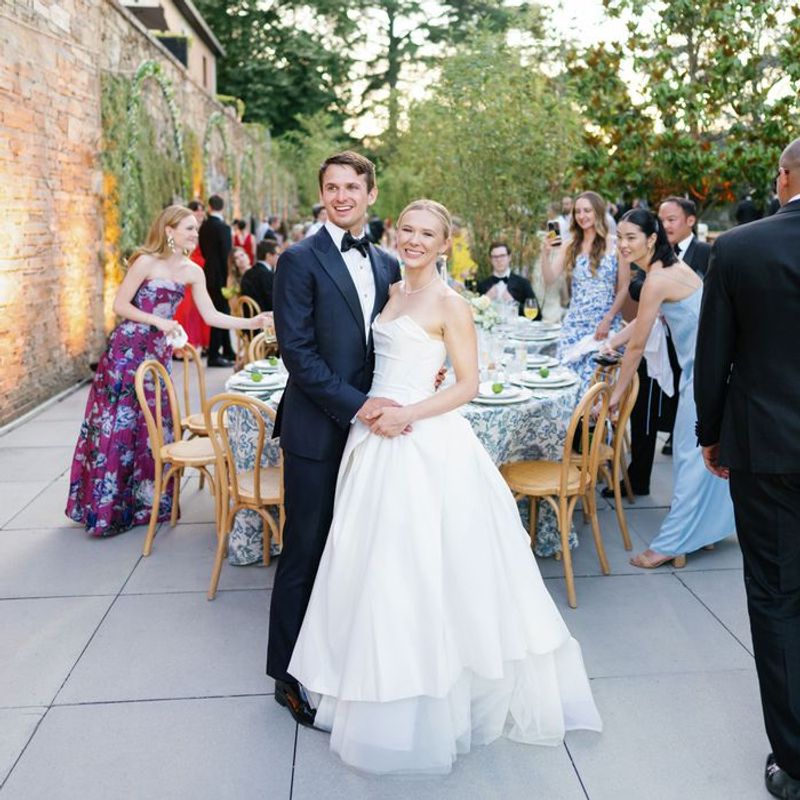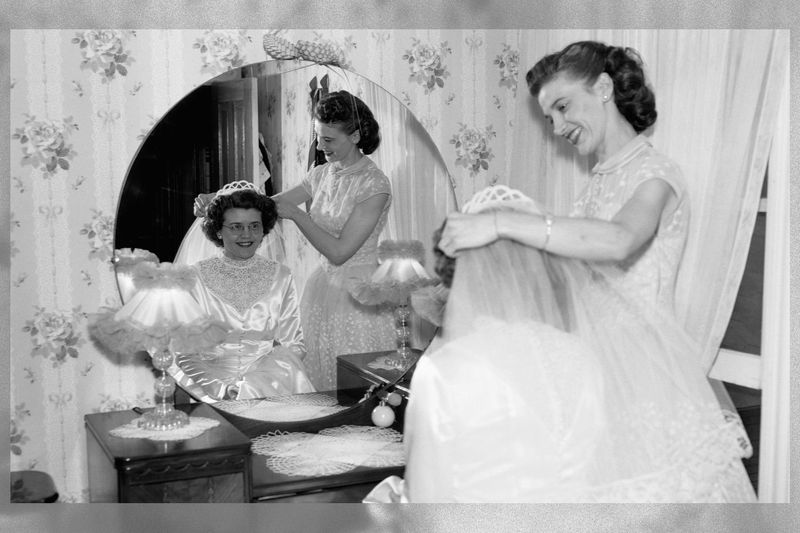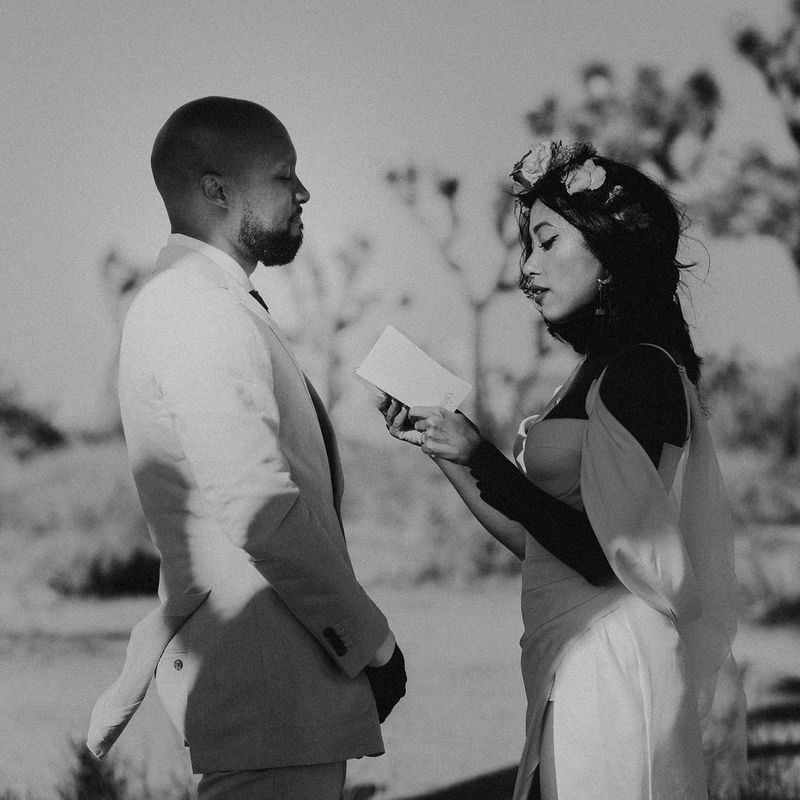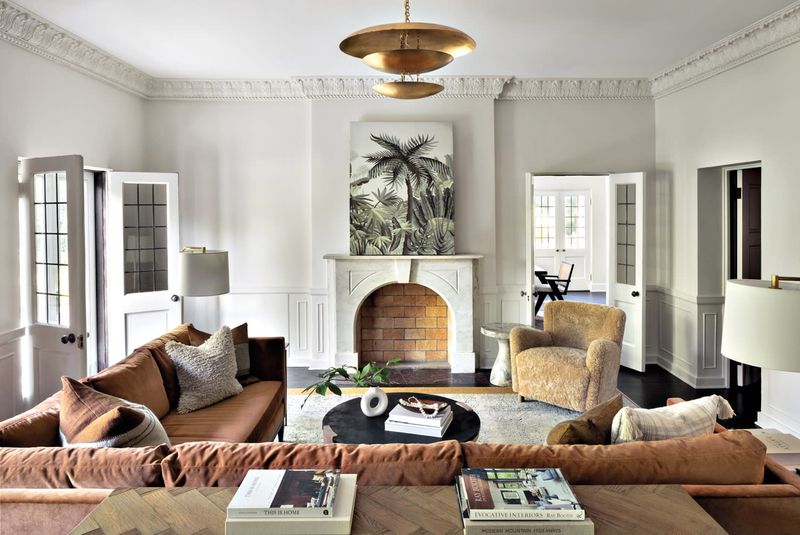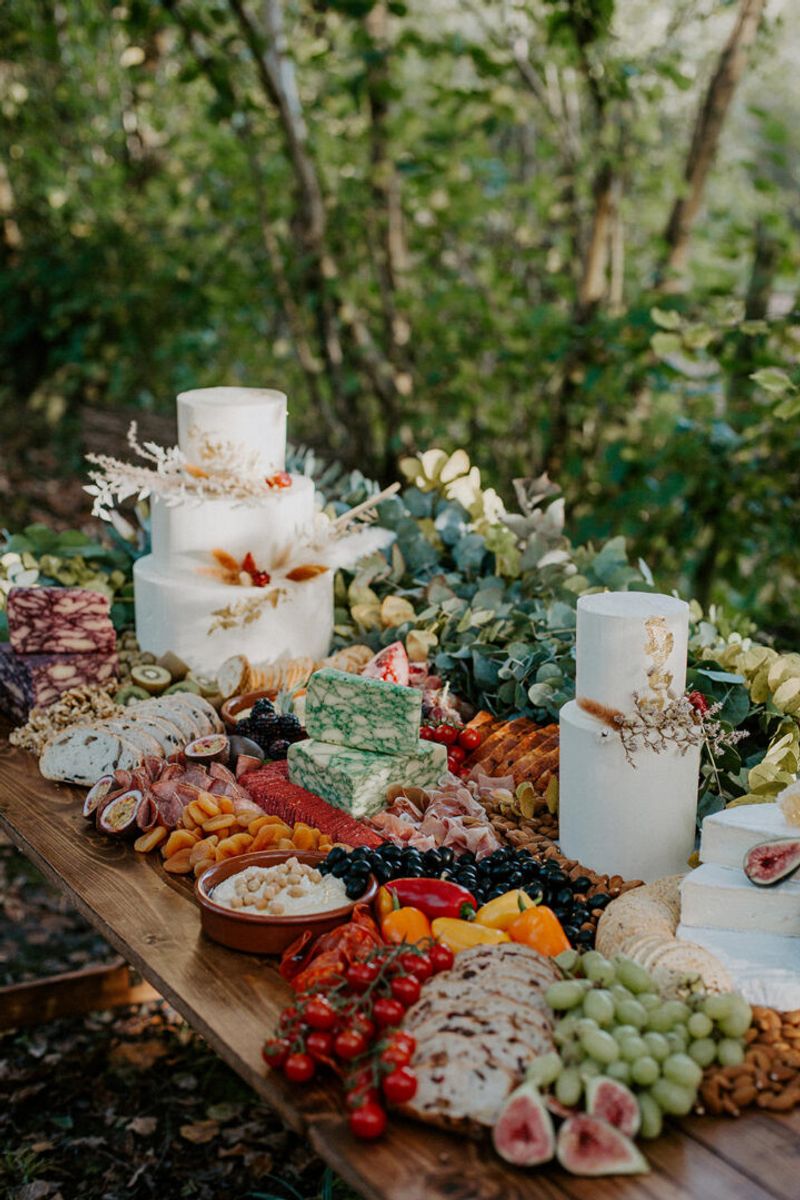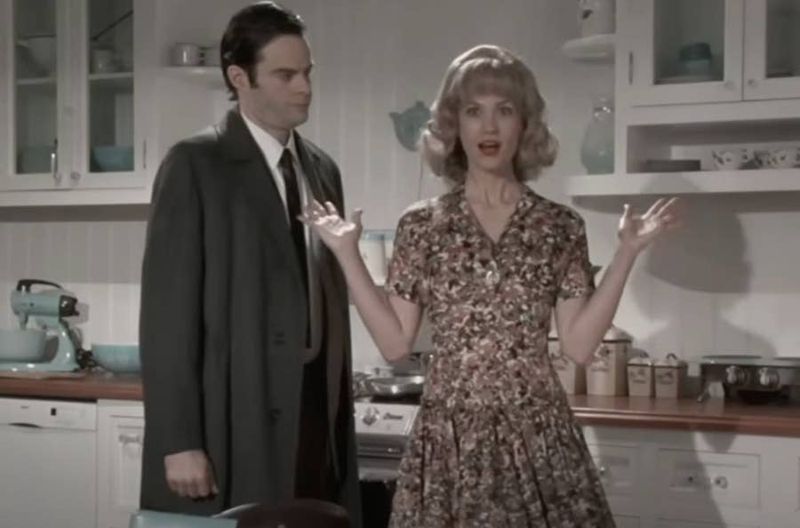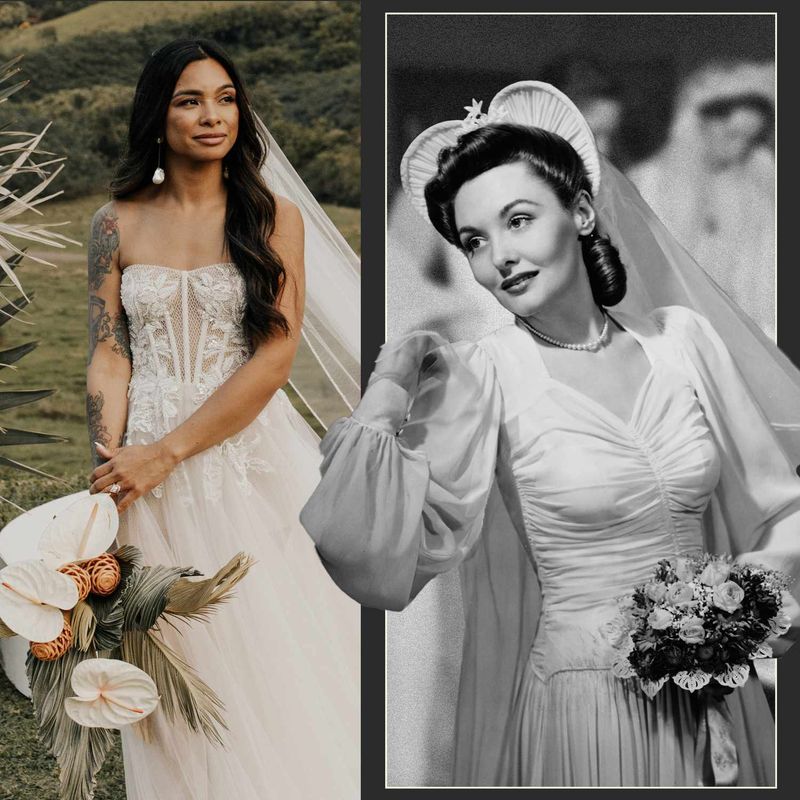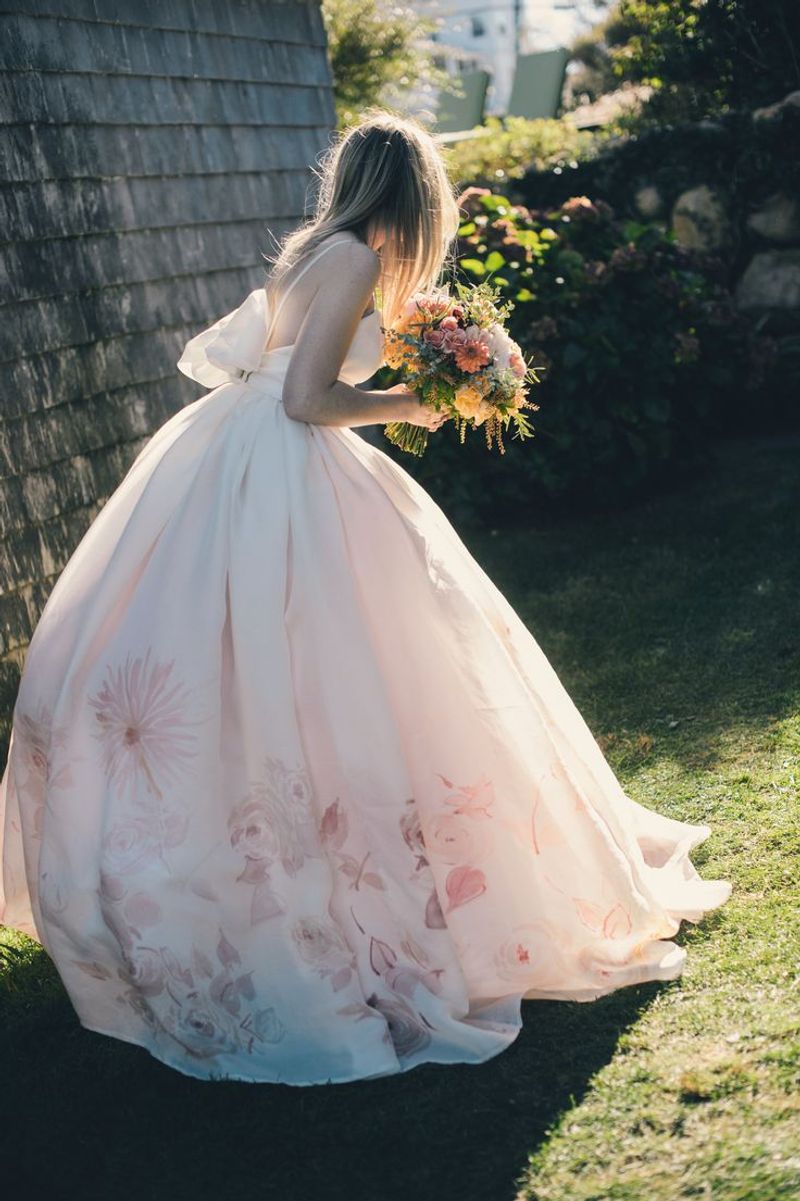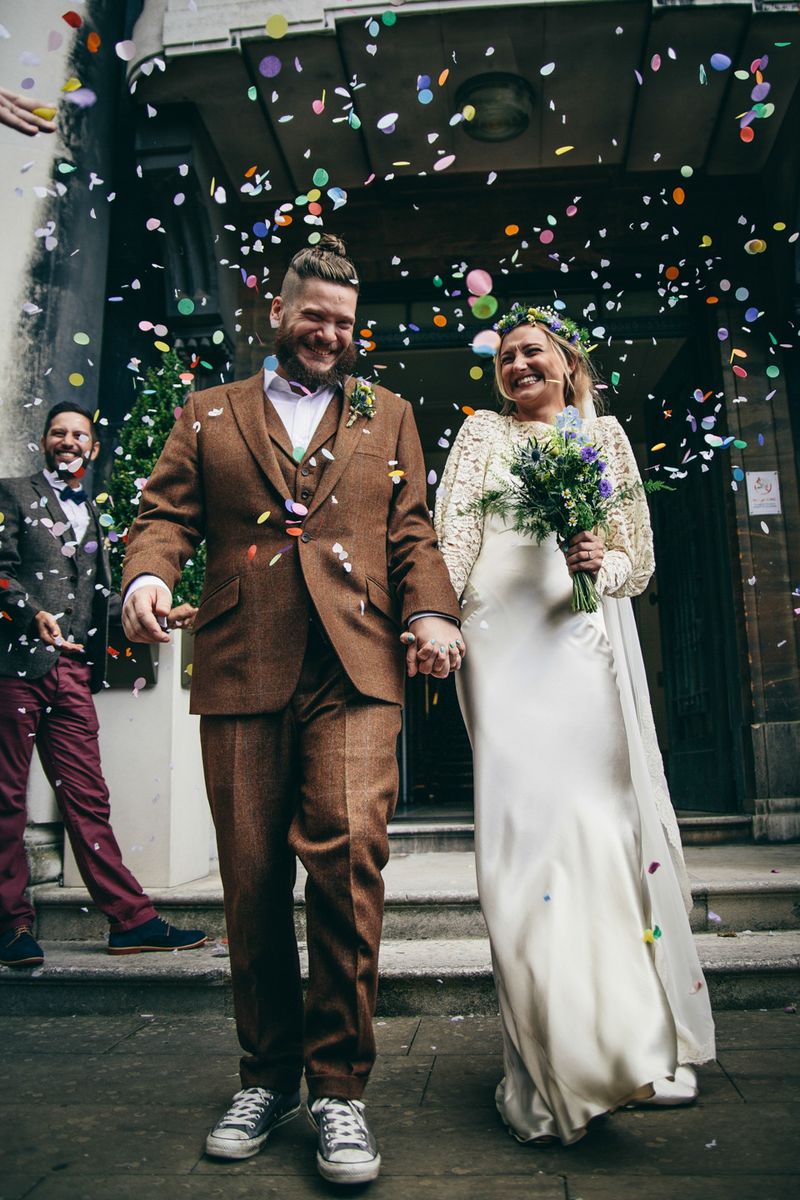Imagine stepping into a time machine set to 1935: a year when weddings were a formal affair, family-driven, and steeped in tradition.
Fast forward to today, and you might find yourself attending a casual gathering on a mountaintop or even witnessing a beloved dog as the ring bearer. Weddings have transformed from old-world customs to modern-day celebrations that reflect the couple’s individuality.
This shift is not just about changing fashions but represents a broader change in societal norms and personal values. Here’s a nostalgic yet observant look at 15 ways weddings have evolved over nine decades.
1. Couples used to meet through family—now it’s mostly apps
In the 1930s, love stories often began with family introductions, casting parents as the ultimate matchmakers. Young couples would meet at social gatherings or be introduced through family connections, nurtured amidst formal dances and chaperoned outings.
Fast forward to today, and swiping right has redefined romance. Dating apps now play cupid, connecting people across miles with a flick of the thumb. In a digital world, love knows no boundaries, allowing individuals to explore compatibility before even meeting face-to-face.
While some may miss the personal touch of family involvement, others embrace the autonomy and vast possibilities technology offers. Modern love stories often begin with algorithms and shared interests rather than social status or family ties. Technology has democratized love, proving that even in a high-tech world, the heart still finds its way.
This shift highlights a broader change in how society views relationships, with freedom taking precedence over tradition.
2. Weddings were small by default—now “micro” is a trend
Back in the 1930s, weddings were intimate affairs, often limited to close family and a few friends. Elaborate affairs were the exception rather than the rule, with most ceremonies held in homes or local churches. Fast forward to the 21st century, and the trend of micro weddings has emerged as a deliberate choice rather than a default.
Now, couples opt for smaller guest lists, not out of necessity, but preference. The focus shifts from grandeur to intimacy, where each guest holds significance in the couple’s lives. This choice reflects a desire for meaningful connections and personal interaction over mass celebrations.
Micro weddings, often hosted in picturesque settings, allow for creative freedom and personal touches. They represent a conscious decision to prioritize what truly matters—love and connection, a sentiment timeless yet freshly embraced in modern wedding culture.
3. The bride’s family no longer foots the entire bill
Traditionally, the bride’s family bore the financial brunt of wedding expenses, a custom deeply rooted in historical norms and gender roles. Fathers would prepare to bid farewell to their wallets along with their daughters, paying for everything from the venue to the food.
Today, this expectation has changed dramatically. With couples marrying later and often more financially stable, they increasingly contribute to their own weddings. Sometimes both families share costs, reflecting a more modern view of partnership and equality.
This shift mirrors broader societal changes towards shared responsibilities and financial independence. Weddings are now a collaborative effort, often involving detailed planning and budgeting by the couple. This reimagining of financial roles not only alleviates pressure on one family but also symbolizes a joint future where both partners contribute equally.
4. Marriage was expected young—now it happens later (if at all)
In the bygone era of the 1930s, marriage was a rite of passage expected to occur in one’s early twenties. The societal script dictated early marriage as a cornerstone of adulthood, paving the way for home-making and family life. Love was intertwined with duty, and starting young was synonymous with success.
However, today’s couples often prioritize education, career, and personal growth, marrying later in life if they choose to marry at all. The age of first marriages has steadily climbed, reflecting a shift in values towards self-discovery and individual fulfillment.
This evolution showcases a broader acceptance of diverse life paths and the understanding that marriage is a personal choice, not a social obligation. The notion of ‘happily ever after’ still exists, but it’s now defined by personal satisfaction rather than societal pressure.
5. “Obey” is long gone from most vows
Wedding vows from the 1930s often included the word ‘obey,’ reflecting the era’s social norms and gender roles. The bride would promise to ‘love, honor, and obey,’ a commitment reflecting the hierarchical structure of marriage.
Today, personalized vows have become the norm, with ‘obey’ notably absent. Couples now craft vows that reflect equality, mutual respect, and partnership. This shift from traditional wording to personalized promises underscores the evolving nature of marital relationships.
Modern vows emphasize love, support, and shared dreams, symbolizing a partnership of equals. The change in language marks a broader societal move towards gender equality, where both partners meet as equals in shared life journeys. As marriage becomes more of a partnership, the words spoken during vows represent mutual commitment rather than unilateral devotion.
6. Elopements are no longer scandalous—they’re stylish
In decades past, eloping was often seen as a rebellious act, a quiet, secretive escape from familial expectations or social scrutiny. Couples who chose this path did so to avoid the pomp and circumstance of traditional weddings, often inciting scandal.
Today, elopements have shed their scandalous reputation and are embraced for their simplicity and romance. They offer an intimate alternative to lavish weddings, with couples choosing scenic destinations and personal vows.
Eloping now symbolizes freedom and spontaneity, reflecting a desire to prioritize personal happiness over societal expectations. The modern elopement is a celebration of love unconfined by tradition, marking a shift towards individual choice and memorable experiences.
7. Couples live together first—and nobody bats an eye
In the 1930s, living together before marriage was practically unheard of and often considered scandalous. The idea of ‘living in sin’ was frowned upon by a society that prized modesty and propriety.
Fast forward to today, and cohabitation is the norm rather than the exception. Couples often choose to live together before marriage to test compatibility and understand each other’s habits, leading to more informed marital choices.
This shift reflects changing views on relationships and personal freedom. Cohabitation is now seen as a smart and practical step in building a life together. It represents a broader acceptance of diverse relationship models, where couples define their path to commitment in a way that feels right for them.
8. Guests expect to eat well, not just “wedding cake”
During the 1930s, wedding menus were simple, often revolving around the iconic wedding cake as a central treat. Guests would gather for cake and tea or a modest meal, with food considered more of a formality than a focal point of the celebration.
Today, weddings are culinary adventures, with couples curating elaborate menus that reflect their tastes and cultural backgrounds. From gourmet stations to multi-course meals, the modern wedding feast is a sensory delight, offering something for every palate.
This change highlights an increased focus on guest experience and enjoyment. Food has become a way to personalize the wedding, creating memorable moments through tastes and aromas. The significance of cuisine in weddings symbolizes a shift towards experiential celebrations where every detail is savored.
9. Divorce isn’t taboo—it’s a common chapter
In the 1930s, divorce was a whispered word, often cloaked in shame and judgment. Marriages were expected to last ‘until death do us part,’ with little room for escape in a society that valued permanence.
Today, divorce is a recognized part of many people’s life journeys, shedding its stigma as more couples prioritize personal happiness over societal expectations. The end of a marriage is often seen as a new beginning, with individuals finding growth and renewal in their newfound independence.
This transformation reflects changing attitudes towards marriage and personal fulfillment. Divorce is no longer seen as a failure but as a decision to pursue a more authentic and happy life. The acceptance of divorce signifies a broader cultural shift towards respecting individual needs and life choices.
10. Marriage isn’t a woman’s only “happy ending”
In the 1930s, marriage was often portrayed as a woman’s ultimate goal, a happy ending to the story of her youth. Society celebrated matrimonial bliss as the pinnacle of female achievement, with careers and personal ambitions taking a back seat.
Fast forward to today, and women’s narratives have expanded beyond the altar. Marriage is just one of many paths to fulfillment, with careers, personal growth, and independence celebrated as equally valid achievements.
This evolution reflects a broader movement towards gender equality and the recognition of diverse life goals. Women are now empowered to carve their own paths, whether that includes marriage or not. The modern ‘happy ending’ is defined not by societal norms but by personal choice and satisfaction.
11. Prenups are more common—and less dramatic
In the earlier part of the 20th century, prenuptial agreements were shrouded in mystery and often seen as a planning tool exclusive to the wealthy or suspicious. Couples entering into marriage rarely discussed financial agreements, fearing it might jinx their romantic commitment.
Today, prenups are common and pragmatic steps for couples looking to protect individual assets and clarify financial expectations. This evolution reflects a more open dialogue about money, recognizing the importance of financial planning in a partnership.
Prenuptial agreements are now less about distrust and more about transparency, reflecting a mature approach to marriage. This shift mirrors a broader acceptance of open communication and planning, ensuring that love and practicality coexist harmoniously in modern relationships.
12. Social media matters as much as wedding photos
In the 1930s, wedding photos were cherished keepsakes, capturing moments for family albums and future generations. A professional photographer would immortalize the day with carefully posed shots, focusing on capturing the essence of the ceremony.
Today, social media plays a pivotal role in weddings, with couples curating their special day for online audiences. Live updates, hashtags, and digital albums allow friends and family to share in the celebration, no matter where they are.
This shift highlights a blend of tradition and technology, where memories are shared instantly and widely. Social media’s impact on weddings encapsulates broader changes in communication and connection, where moments are relived in likes, shares, and comments, adding a new dimension to the wedding experience.
13. Brides no longer have to wear white—or a dress at all
The traditional white wedding dress has been a symbol of purity and elegance since the Victorian era, dominating bridal fashion for over a century. In the 1930s, a white gown was almost obligatory, capturing the essence of innocence and formality.
Today’s brides are breaking away from convention, choosing attire that reflects their individuality and personal style. From colorful dresses to chic suits, the modern bride wears what makes her feel beautiful and authentic.
This transformation symbolizes a shift towards personal expression and away from rigid norms. Brides now celebrate their uniqueness, embracing diverse fashion choices that resonate with their values and personality. The evolution of bridal attire reflects a broader move towards inclusivity and self-expression in wedding culture.
14. It’s okay to skip the kids, the church, or the bouquet toss
In the 1930s, weddings were steeped in tradition, often held in churches with children playing significant roles, and rituals like the bouquet toss were standard fare. Every element was laden with meaning and expectation, leaving little room for deviation.
Today, weddings are more customizable, with couples choosing which traditions to keep and which to skip. Some opt for child-free ceremonies, outdoor venues, or unique rituals that resonate personally.
This flexibility reflects a broader trend of personalization, where weddings are crafted to reflect the couple’s values and desires rather than adhering to societal norms. By discarding outdated customs, couples create celebrations that are uniquely their own, highlighting authenticity over convention.
15. The couple actually chooses what they want—not what tradition demands
In the 1930s, weddings were bound by tradition, with decisions heavily influenced by family expectations and societal norms. Couples often had little say in the planning, adhering to established customs regardless of personal preference.
Today, couples are empowered to craft weddings that genuinely reflect their personalities and relationship. Whether it’s choosing a non-traditional venue, incorporating unique themes, or writing personalized vows, the focus is on what feels authentic.
This change represents a broader cultural shift towards individuality and authenticity. Weddings are no longer about fulfilling obligations but about celebrating love in a way that feels right for the couple. The freedom to choose symbolizes a move towards personal expression and away from conventional pressures.

